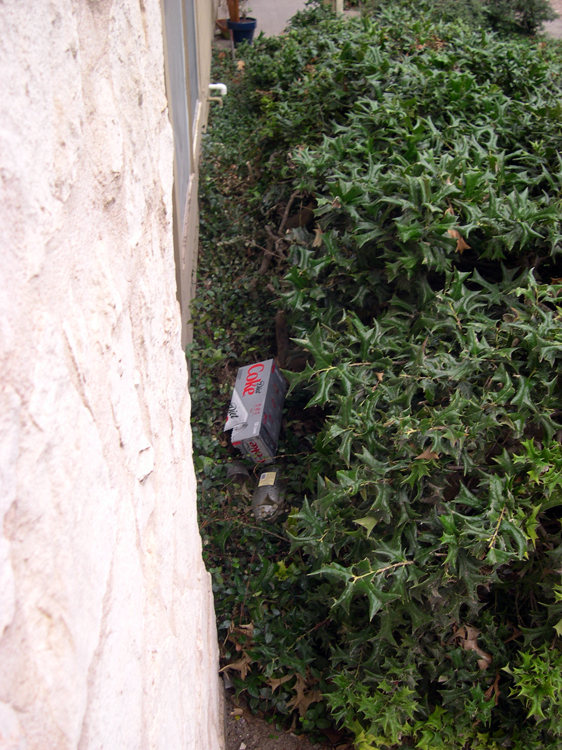[2008-11-11] Spiny shrubs create impregnable litter trap

The north elevation of my condo block is landscaped with various bushes and shrubs. Among these are a spiny-leafed variety that I want to call "holly," although that may be technically incorrect. Suffice to say the leaves have sharp owies and if you accidentally brush up against them you'll certainly regret it.
Now, there is a narrow space between the bushes and the building which, like just about every outdoor space in West Campus, tends to collect litter--cups and cans and liquor bottles from parties, empty polyethylene bags, discarded flyers and notebook pages. It is possible to see into this space, but not to reach or squeeze into it to retrieve the litter because of the spiny leaves. So the bushes serve to trap trash where it is visible to residents coming down the stairs, but in such a way that it cannot be easily removed without leather clothing or some other kind of armor. Armoring up to pick litter out of the bushes is too much to ask of our maintenance personnel (and I don't really blame them), so the trash just piles up back there getting uglier and uglier.
It have heard it suggested that spiny bushes might have been chosen to repel herbivores who might otherwise defoliate the landscape, and/or to deter transients (of which there are many in the area) from seeking refuge inside them. Both of which might be valid arguments if not for the fact that many of the other bushes and shrubs along the same wall are of friendly, non-owie varieties. It seems most likely, then, that the spiny bushes were chosen from among the hardy shrub plants solely for aesthetic variety, without thought to the access problems their spines would later create. This is why landscape architects need to think on a deeper level than just decoration.
last modified 2008-11-11